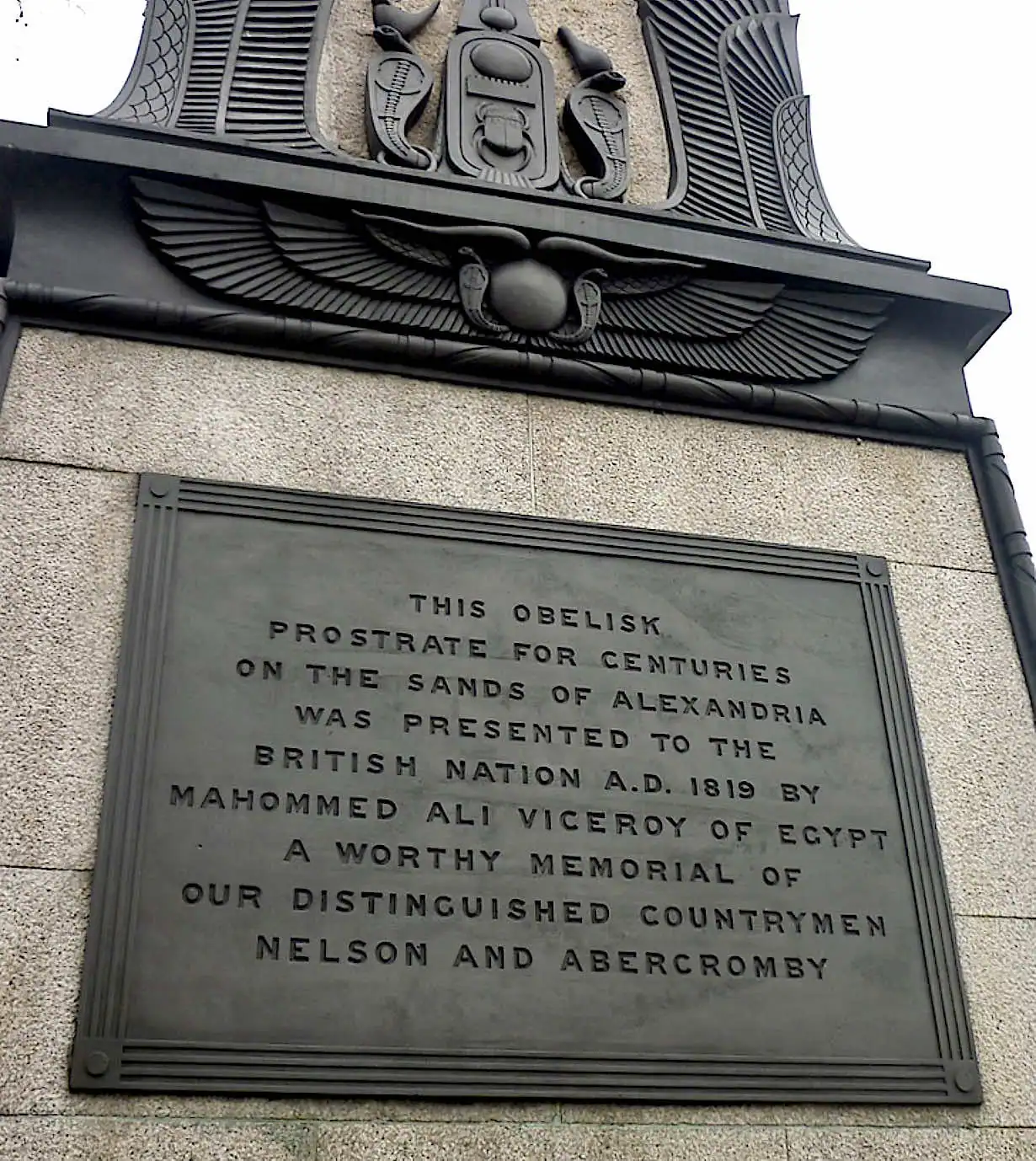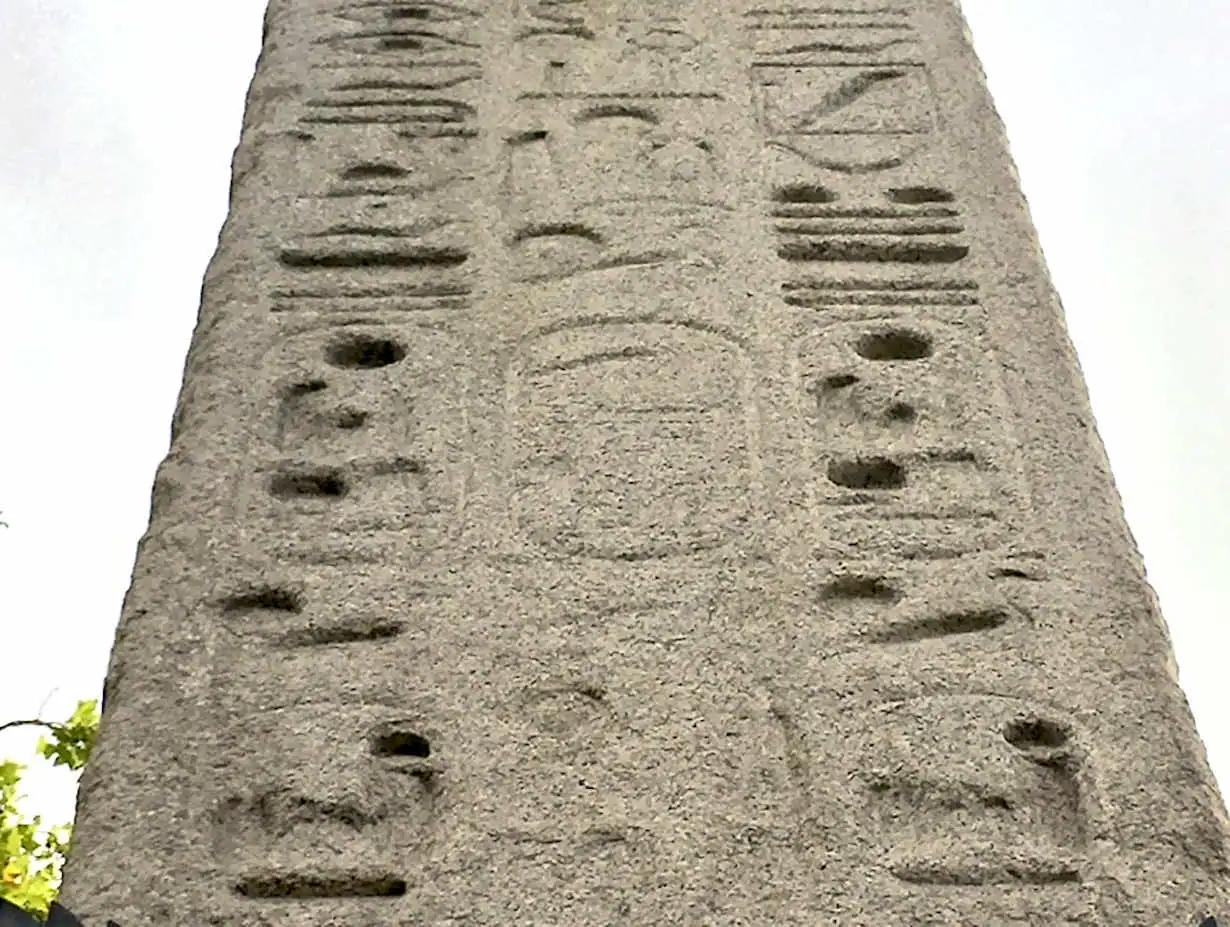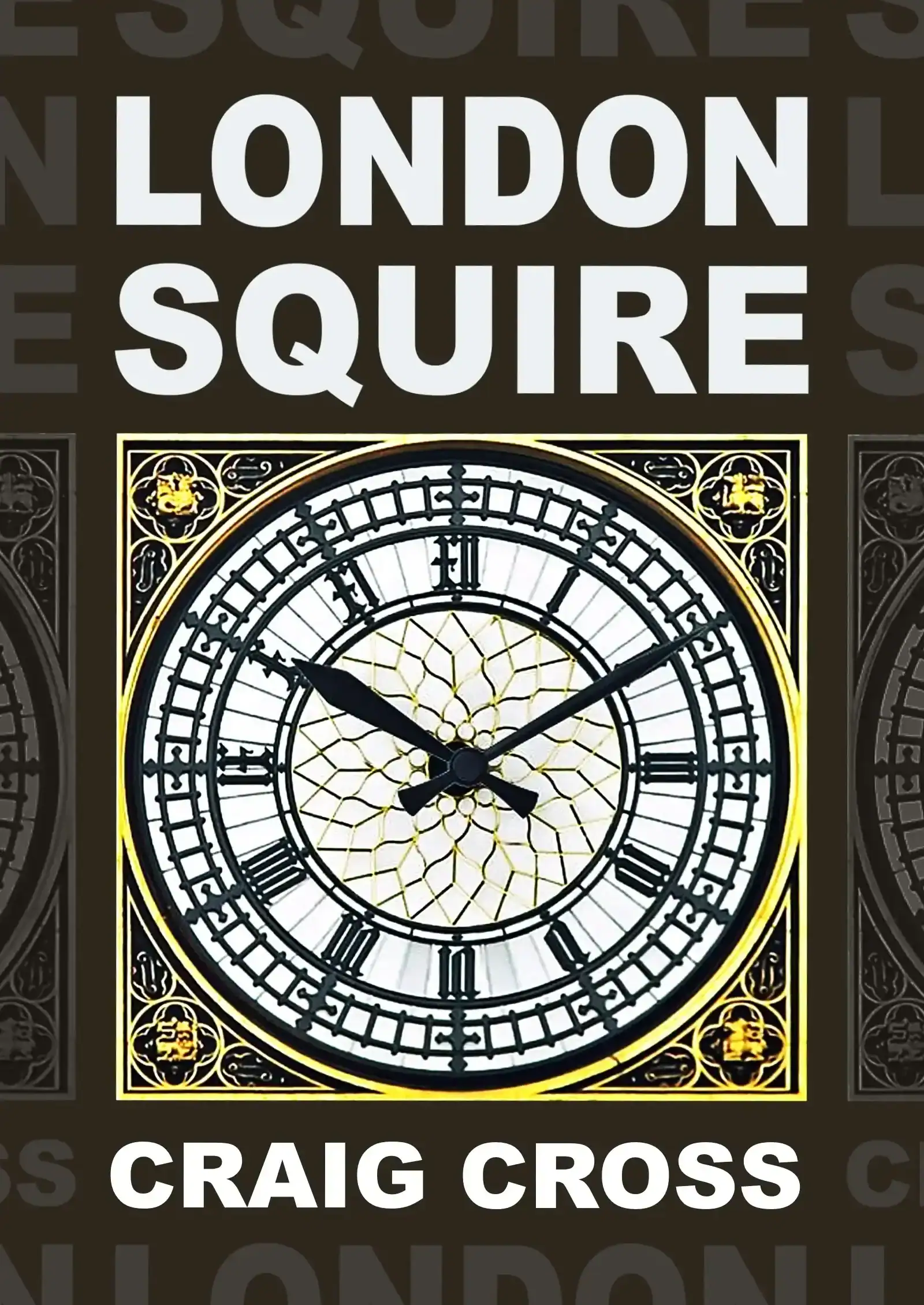Cleopatra’s Needle swapped the Nile for the Thames and the Temple of Heliopolis for Temple tube station, so she’s bound to feel a little bit homesick.
They’ve positioned a couple of sphinxes next to her to make her feel at home, I suppose. And she’s got drifts of dirt that double-up as sand. And we do occasionally have a bit of sunshine in London, so it’s not impossible for her to pretend she’s still in Egypt.
 Photo: Craig Cross
Photo: Craig CrossIt’s amazing to think that this monument is even older than London itself – and I mean that quite literally because back when the Romans were building the first bridge across the Thames Cleopatra’s Needle was already 1,500 years old. Just think about that for a second… this obelisk was already ancient before the Romans arrived. It was even ancient in Cleopatra’s day – the pharaoh that it was named after was born fourteen centuries after it was built! Cleopatra was as far removed from the early pharaohs as we are from the fall of Rome.
 Photo: Craig Cross
Photo: Craig CrossFrom the Temple of Heliopolis to London
It was originally one of a pair of obelisks that stood outside the Temple of Heliopolis, and it wasn’t until the Romans shifted them to the Caesareum that they obtained their current name. A short time later one of the pair fell over and spent the next 1,800 years lying face down in the sand.
That’s when Admiral Nelson and Napoleon entered the story (what an amazing history!). When Nelson beat back the French at the Battle of the Nile the grateful Egyptians gave us the long-toppled obelisk as a gift, which wasn’t as generous as it sounds because they also insisted that we had to carry it back to Britain at our own expense. Seventy years later they gifted the upright one to America just for remaining neutral in a war, and gave a third one to France in exchange for a mechanical clock.
 Photo: Craig Cross
Photo: Craig CrossHow mad is that? New York basically got theirs for doing nothing, Paris swapped theirs for a clock, whilst we had to wage war on a European megalomaniac. The next time we did that in 1945 we got a free Christmas tree from Norway – we keep getting diddled on the gifts!
It was the Victorians who finally worked out how to float it over on a custom-built boat. Unfortunately a terrible storm off the Bay of Biscay left six of their sailors dead and the vessel floated alone for four days until it was hauled in by some Scots. After we’d paid them off (we had to pay them another five grand to get it back) it was finally towed back to Britain.
And so here we are, two obelisks reunited again – me and her – only this time I’m the one who’s in danger of toppling over because my knees are playing up today. I’m thinking of having a sit-down on the Egyptian-themed benches but they’re all being used as rest stops for joggers doing up their shoes, and snoozing dudes who are using them as a bed.
 Photo: Craig Cross
Photo: Craig CrossEgyptian hieroglyphs on the obelisk
There are a few tourists squinting up at the hieroglyphs to see what they say, but all you can make out are a few owls and faded feathers. You can see a couple of cartouches that will say either Thutmose III or Ramesses II, but good luck trying to decipher them way up there. You need to bring some binoculars with you if you want a closer look.
 Photo: Craig Cross
Photo: Craig CrossShrapnel damage from World War I
If you have a stroll around the base then you’ll see a lot of pockmarks in the concrete where it sustained some shrapnel damage during the war. Most people assume that the first bombing raid over London was during the Blitz, but it was actually when a wave of wooden fighters came over in 1917. It must have been one hell of an explosion judging by the great gouges that have been blasted out of it.
 Photo: Craig Cross
Photo: Craig CrossI wonder what Thutmose III would have thought 3,500 years ago, watching his obelisk being unveiled in the desert, if he’d had a flash-forward to its apocalyptic future of fire and flames and bombs dropping on it from the sky.
Time capsule buried underneath the obelisk
When the Victorians put it into position they also buried a time-capsule underneath with a very eclectic collection of stuff. They included some pictures of the world’s most beautiful women, a few pipes and cigars, a baby’s bottle and box full of hairpins, some metal cables and hydraulic jack which they’d used to raise it up, a bronze model of the monument, a complete set of British coins, a railway timetable, a Bible, Whitaker’s Almanack, a portrait of Queen Victoria, and ten daily newspapers. It’s almost worth pushing the obelisk over just to see if they’re still there.
. If you’re interested in ancient Egypt then they have lots of statues, monuments and sarcophagi at the British Museum. The Petrie Museum has a huge collection of pots and everyday objects, and Sir John Soane’s Museum has lots of statues and the sarcophagus of Seti I
 The author Craig Cross owns city-guide.london and has spent the last decade reviewing the capital’s landmarks, attractions and hotels. His guidebook London Squire is available from Amazon. This review was updated on
The author Craig Cross owns city-guide.london and has spent the last decade reviewing the capital’s landmarks, attractions and hotels. His guidebook London Squire is available from Amazon. This review was updated on
Your comments and questions
Ben Do you have a translation of the hieroglyphs?
Craig Hi Ben. Have a look at this page, it has a full translation of all four sides of the obelisk - gutenberg.org/files/37785/37785-h/37785-h.htm
Denis Just found your fantastic website...I remember reading that the sphinxes should be defending and face away cleopatra's needle, not towards it. Similar to lions in Trafalgar Sq.
Craig Hi Denis. You're right, they're supposed to be facing the wrong way. They say it goes back to the original sphinx who’s facing away from the Great Pyramid
Leave a comment